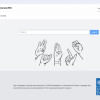Bangladesh’s digital transformation roadmap draft: Key takeaways

Bangladesh's ICT Division, in collaboration with the United Nations Development Programme (UNDP), has released a draft version of the 'National Digital Transformation Strategy' on February 16, 2025.
The ICT Division Reform Roadmap document outlines a 171-page comprehensive plan for modernising the nation's digital public infrastructure, enhancing governance and expanding the digital economy over the period 2025 to 2030 with the focus of establishing a robust, secure, and inclusive digital ecosystem. The strategy, which remains subject to stakeholder review, is designed to integrate technologies such as AI, blockchain, and digital public infrastructure (DPI) into the country's digital governance framework.
Among many of the objectives described in the official documents, here are some of the points.
A key objective of the plan is the establishment of interoperable digital infrastructure to streamline government services. The initiative will also address major concerns regarding cybersecurity, aiming to train 20,000 cybersecurity experts by 2027 and 50,000 by 2030. The roadmap envisions expanding the ICT workforce to seven to eight million professionals within the same period, ensuring that Bangladesh remains competitive in the global digital economy.
The government also plans to adopt UNESCO AI Readiness Assessment Methodology (AI RAM) to align its policies with global best practices. The strategy mentions upskilling the RMG workforce to prepare the country for the challenges of AI and the Fourth Industrial Revolution (4IR).
Addressing institutional challenges and cybersecurity gaps
Despite significant progress in digitisation, Bangladesh's ICT ecosystem remains hindered by institutional silos and fragmented data repositories. Major databases, including the National Identity (NID) system, Bangladesh Bank's records, and the Health Management Information System (MIS), operate in isolation, lacking secure interoperability. This fragmentation has contributed to inefficiencies, increased operational costs, and heightened cybersecurity risks.
The government has also acknowledged past data breaches, including exposures of sensitive financial transactions and mobile banking details on the dark web. In response, the strategy outlines the development of a national cybersecurity framework, the implementation of a National Data Exchange (NDX) to integrate NID, CRVS, financial records, and tax records. Also the implementation of a Personal Data Protection Act (PDPA), and the establishment of an independent Data and AI Authority under the Supreme Court. This authority, which will operate independently of the government and law enforcement agencies, is expected to oversee AI governance and ensure the ethical deployment of emerging technologies.
Reforming the ICT division for enhanced service delivery
The digital transformation strategy includes a phased approach to reforming the ICT Division to enhance public service delivery. Between 2025 and 2026, key initiatives will include the launch of the Bangladesh National Digital Architecture (BNDA), the creation of a National Data Exchange (NDX), and the digitisation of 800-plus government services. AI-driven automation will be introduced to public services, while MyGov and D-Nothi platforms will be expanded across all ministries.
To accelerate the digital economy, the government plans to establish a Universal Payment Gateway, facilitating real-time transactions across banks, mobile financial services, and government platforms. Additionally, regulatory frameworks will be refined to attract foreign direct investment (FDI) into the ICT sector, with an emphasis on fostering an innovation-driven startup ecosystem.
Phases of the reform roadmap
The reform roadmap is structured in three phases over the span of 6 years. In Phase 1 (2025–2026), immediate priorities include the launch of the Bangladesh National Digital Architecture (BNDA) and the establishment of NDX to integrate key databases. The implementation of the Personal Data Protection Act (PDPA), the digitisation of over 800 government services and the expansion of AI-driven automation in public service delivery are also planned. Additionally, a National Cybersecurity Taskforce (N-CERT) will be developed to strengthen cyber resilience.
Phase 2 (2027–2028) is focused on scaling and optimisation. The strategy calls for a full-scale rollout of 5G networks, the introduction of a National Cloud Policy, and the deployment of secure, AI-driven identity verification systems. This phase also includes measures to operationalise the Cybersecurity Ordinance (2024) and to reinforce regulatory frameworks governing AI, fintech, and blockchain technologies. The plan also envisions the development of a National Digital Taxation System and the enhancement of real-time data analytics capabilities.
Phase 3 (2029–2030) targets the achievement of a fully digital economy and smart governance. The roadmap projects the complete digitalisation of public services accessible via a unified citizen portal, the operational deployment of an AI-powered predictive governance system, and an ICT export revenue target of US $5 billion. The strategy also anticipates a 50% increase in startup funding and aims for Bangladesh to be ranked among the top 15 countries on the UN E-Government Development Index.
Establishing Bangladesh as a regional digital leader
To ensure effective implementation, the government will form a National Digital Transformation Taskforce (NDTT), which includes representatives from the ICT Division, Bangladesh Computer Council (BCC), Bangladesh Bank, the Ministry of Finance, NBR, BTRC, Cabinet Division and development partners such as the World Bank, JICA, EU, and UNDP. Regular progress reports and benchmarking against regional peers such as Vietnam, India, and Malaysia will guide the roadmap's execution.
The government's immediate priorities include finalising the implementation framework for BNDA and NDX, reinforcing cybersecurity capabilities, and ensuring the full adoption of digital governance reforms.
Is this roadmap too ambitious?
The proposed initiatives are highly commendable considering the comprehensive and phased approach with specific timelines and measurable targets with room for monitoring and evaluation. By putting emphasis on running initiatives on AI, blockchain, cloud computing, and 5G, the policy aims to future-proof Bangladesh's digital infrastructure. The potential of huge scale collaboration by stakeholder involvement and capacity building goes hand in hand with the digital advancements and inclusion.
While this strategy plans to position Bangladesh as a potential leader in South Asia's digital transformation, the strategy is ambitious considering the bureaucratic challenges of Bangladesh. As the digital ecosystem of Bangladesh is already very fragmented, aligning these fragmentations will need a lot of coordination across a wide array of initiatives across multiple ministries and agencies which may lead to bureaucratic delays.
However, bureaucratic delays in various services are also acknowledged in the draft strategy by including inspiring benchmarks like the e-Estonia paperless government where 99% state services can be accessed online, according to the draft. Ultimately, the successful implementation of the strategy rests upon effective inter-agency collaboration and clear lines of accountability.
How is it beneficial for Bangladeshis?
The roadmap is designed to transform everyday life for regular Bangladeshis by making public services simpler and more accessible while enhancing security and economic opportunity. If successfully implemented, one of its central benefits is the digitisation of a vast range of government services. By integrating over 800 services into a unified platform with a single sign-on feature, citizens will be able to complete tasks such as applying for passports, registering births, filing taxes, and accessing social benefits entirely online. This shift should not only save time and travel costs but also reduce the bureaucratic delays that have long hampered service delivery, thereby making interactions with government agencies far more efficient.
Moreover, the roadmap emphasises robust cybersecurity and improved data governance. In an era where data breaches have exposed sensitive personal information, strengthening the digital security framework should reassure citizens that their private data will be better protected. The planned implementation of the Personal Data Protection Act and the establishment of a dedicated National Cybersecurity Taskforce, as per the draft, are aimed at securing citizen data and reducing the risk of unauthorised access or misuse. If implemented properly, this might build public trust in the digital services that are becoming increasingly central to daily life.

 For all latest news, follow The Daily Star's Google News channel.
For all latest news, follow The Daily Star's Google News channel. 









Comments